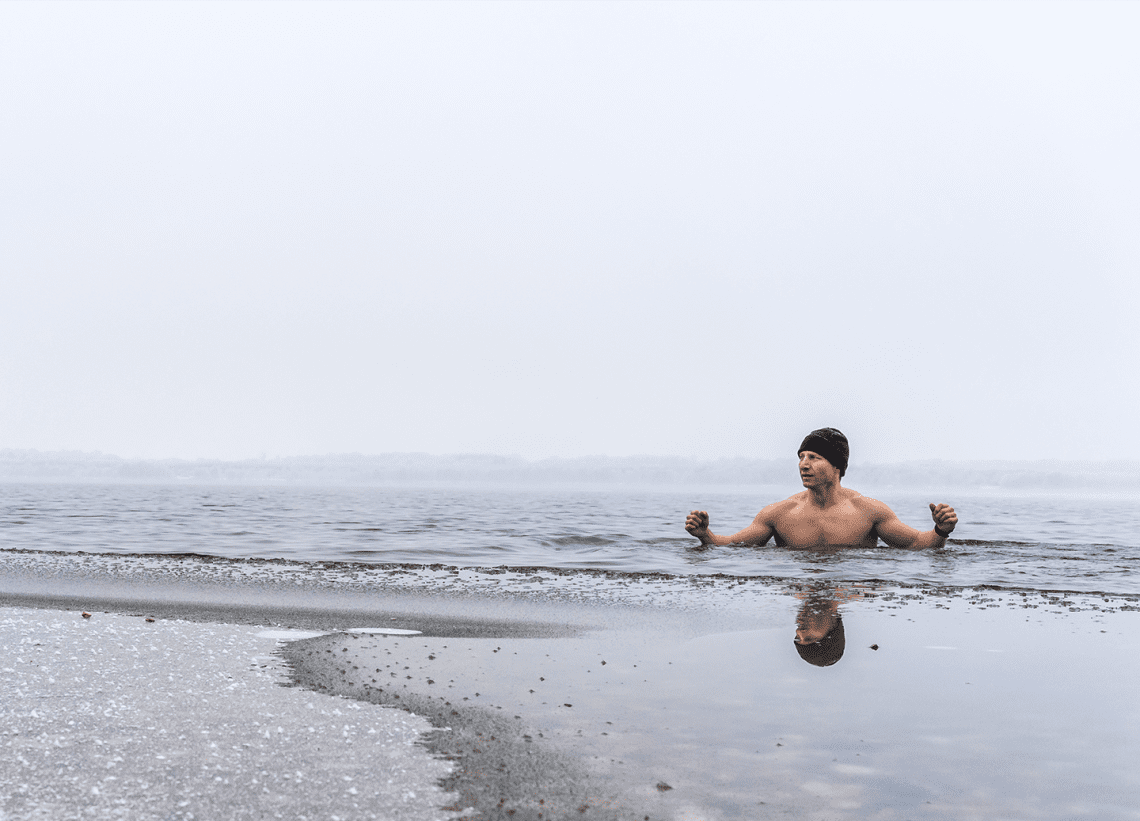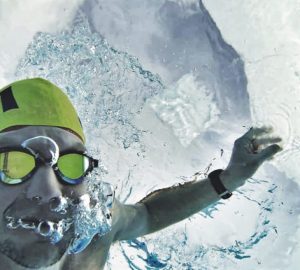
A guide to water temperature
Compared to indoor heated swimming pools, which vary in temperature from around 26 to 31 degrees Celsius, you are likely to be exposed to a much wider range of temperatures when swimming outside. In the UK, inland waters can be as low as zero in winter to as high as the mid 20s in peak summer. Coastal waters vary from low single digits to the high teens. The water temperature has a massive impact on how you swim and how long you can safely stay in the water.
Cold water shock
For the inexperienced, the biggest danger from sudden immersion in water that’s significantly cooler than you’re used to is cold water shock. This is the body’s initial and automatic response to rapid change in skin temperature. It causes, among other things, a sharp intake of breath, an increase in breathing rate and an increase in blood pressure. It typically lasts up to a couple of minutes. For the unwary, cold water shock can be deadly, especially if that sharp intake of breath occurs under water. In addition, if you have an underlying heart condition or hypertension then the sudden change in blood pressure may cause complications. Therefore, enter the water slowly and keep your face clear until your breathing is under control. The cold water response decreases with swimming experience and being mentally prepared.
Swim Failure
The second problem with cold water is that it can result in swim failure. To protect vital organs in the core, the body restricts blood flow to the limbs when in cold water. If this reaches extreme levels the arms and legs no longer function properly and you can’t swim. If you feel yourself slowing down or struggling to swim, get out.
Hypothermia
The next risk is hypothermia. This occurs when you suffer a drop in core body temperature and can eventually lead to loss of consciousness and heart failure. The amount of time you can swim in cold water without suffering from hypothermia is determined by the temperature, your body size and shape and your experience, among other factors. Start with short swims to learn what your limits are. Always swim with other people. If your stroke rate slows down or you start to shiver, get out and warm up.
After Drop
When you finish swimming, you also need to concern yourself with something called ‘after drop’. This happens when you exit the water and cool blood from extremities starts circulating through your body again, lowering your core temperature, which is why you often start to shiver a few minutes after you finish swimming. To minimise the risk, dress immediately starting with the top half of your body. Put on a hat and gloves and have a warm (non-alcoholic) drink.
A wetsuit will not prevent cold water shock nor stop you from suffering hypothermia. However, it will help you to stay warmer for much longer, keep you afloat and, in most cases, allow you to swim faster.
Also bear in mind that the water near the surface, especially on hot sunny days, can be much warmer than the water below.
Guide to water temperatures in open water
| Temperature | Technical term | Description |
| 0 to 5 degrees | Bloody freezing | The preferred temperature for extreme winter swimmers. Causes pain and takes your breath away. Except for the very experienced, and only under strict supervision, swims should be limited to a few minutes. Enjoy the buzz when you get out. |
| 5 to 10 degrees | Effing cold | Typical lake and river temperature in early spring. Still painfully cold and not recommended for anything other than very short swims (5 to 10 minutes) unless you are very experienced. |
| 10 to 15 degrees | Nippy or ‘not as warm as we like it’ | Open water starts reaching these temperatures in late spring around much of the UK. At the lower ends, it will still feel extremely cold initially but longer swims are now possible. Experienced swimmers can manage several hours or more as the water approaches the mid teens but hypothermia is still a big risk. |
| 15 to 20 degrees | Alright (once you get used to it) | The English Channel in summer. If you’ve only ever swum in a pool, this will feel cold but with a bit of experience and practice most people find this range comfortable, at least initially. |
| 20 to 25 degrees | Balmy | Rarely reached in the sea around the UK, but sometimes in inland lakes. If you’re a habitual wetsuit wearer then seriously consider removing it at these temperatures to avoid overheating. Very pleasant. |
| 25 to 30 degrees | Stifling | Like a swimming pool. Some open water swimmers find these temperatures too high for serious swimming. Make sure you have plenty to drink. Don’t wear a wetsuit. |
| 30 degrees plus | Hot | Avoid strenuous swimming as there is a definite risk of heat stroke. |
Note, swimmers have widely differing opinions about comfortable water temperatures and people’s bodies respond differently. Learn to trust your own experience and feelings.









